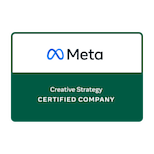It may be March, but it’s very likely that the crazy pace of year-end activity followed you right into January and February. The good news is that it’s never too late to stop and assess your digital media program. In fact, now is the perfect time to set aside an afternoon, or even an hour, and focus on these 10 quick tune-ups.
1. Update Evergreen Ads: Did you update all of your evergreen (ads not tied to a specific campaign) ads for the new year? It seems silly, but we can’t tell you how many times we’ve reviewed someone’s program and seen that their evergreen ads still say 2017. No judgement here! With so many ad versions, it can be hard to keep track. While you’re at it, check that no other information on those ads is old or no longer accurate.
2. Check That Every Ad Also Has A Test Version: Make sure that you are running at least two ad versions in every Facebook campaign and in Google search. Both of these are testing platforms. If you’re not running at least two versions of each ad, you’re not leveraging each platform’s built-in optimization features., Don’t miss out on an opportunity to learn something (and gain more donations).
3. Add A New Channel To Your Program: If you’re already using every channel, congrats! If not, test a channel this year. It doesn’t have to be complicated. If you’re not advertising on Bing, now is a good time to start. Bing users are older and more educated, perfect potential donors. Copy over your Google campaigns, and get started. Your spend can be small to start – voila, you’ve expanded your program!
4. Implement 5 New Ad Tests: Have you been running video ads? If not, give them a try. Do any of your Facebook ads feature a button in the ad image? What about trying ads with no ad copy? Think of 5 tests that you’d like to implement this year and put a plan in place to make them happen. Again, this doesn’t have to be intensive, no intense deliberation or committees needed. Choose the first 5 tests you can think of, or the ones you can accomplish quickly. Observing the results will help you think of more tests. Having a “testing culture” will improve your program and get others on board.
5. Check Your Custom Audiences: If you haven’t uploaded any custom lists (and used them to build lookalike audiences), do that first (and quickly!). If you’re already are using custom audiences and lookalikes, check to see when they were last updated. Many organizations have just spent the last quarter of the year acquiring new donors and cultivating existing ones. If you haven’t updated your custom lists in the last few months, you’re missing out on people who are eager to hear from you and feel connected to your cause. After you’ve updated these lists, add a task to your calendar to do this quarterly.
6. Test A New Offer: You probably have a proven offer that works well in direct mail. Chances are you use it everywhere. Digital is a great place to quickly and effectively test new offers when it’s too expensive to do so in other channels. Take advantage of the testing orientation of these platforms and test as much as you can. Once a test performs consistently, and at scale, you can consider spending additional time and money to test it in print (or other established channels).
7. Evaluate Your Budget Based On Last Year’s Results: Did anything happen last year that surprised you? What were the test results that you want to capitalize on? What areas underperformed? Don’t just keep spending money as you have been historically. Move budget around to different channels/campaigns/timeframes based on what happened last year. Make sure to keep a small presence in each channel regularly and don’t shut anything off completely.
8. Consider A Name Acquisition Offer: Donations are great. They are your primary goal and have an ROA or ROI attached to them that helps you easily make a case for their spend. But your program has additional needs, and digital channels are a great place to experiment without breaking the bank – whether that’s increasing website traffic, getting new names, or something else. When advertising for names, be sure to think through the entire system. Provide a compelling reason (or resource) to encourage someone to share their email address with you. Then follow up with them and encourage them to make a donation. We often do this in a 3-8 automated email nurture pathway.
9. Turn Something Off If It’s Under Performing: You have a limited amount of time and resources. Sometimes things just aren’t working, even if you want them to or can’t figure out why. Be bold. Abandon something if it’s underperforming. Transfer the budget to a new idea or approach that has potential.
10. Improve Your Program’s Visibility: Digital media connects to all areas of your organization – from marketing to development, from offer testing to name acquisition. Make sure that you have a plan to share your findings and results with other departments. Better yet, plan together so that everyone learns. Make your digital media a linchpin for strategic planning and execution throughout your organization.
The beauty of digital media is that you can try, learn, and adjust quickly. Digital media is iterative, allowing you to run campaigns more nimbly than in traditional channels. In these channels you can move quickly (but still accurately) because mistakes can be corrected in seconds and you can change course the second you decide it’s warranted. Challenge yourself and your team to think about the possibilities of digital and use them strategically to your advantage – to learn, to grow, and to push your program forward.
About: Polly Yakovich
Polly is a partner at A Brave New, a boutique agency that specializes in branding, inbound marketing, and web design. She focuses on strategic marketing and fundraising strategy. She has worked at nonprofits and at agencies serving nonprofits for over 15 years. Before starting A Brave New she served as a team leader and strategist for a client team serving regional nonprofits across the country at an agency dedicated to nonprofit fundraising. She has been responsible for all facets of direct response fundraising programs from strategy, to print and digital execution at all donor levels.











